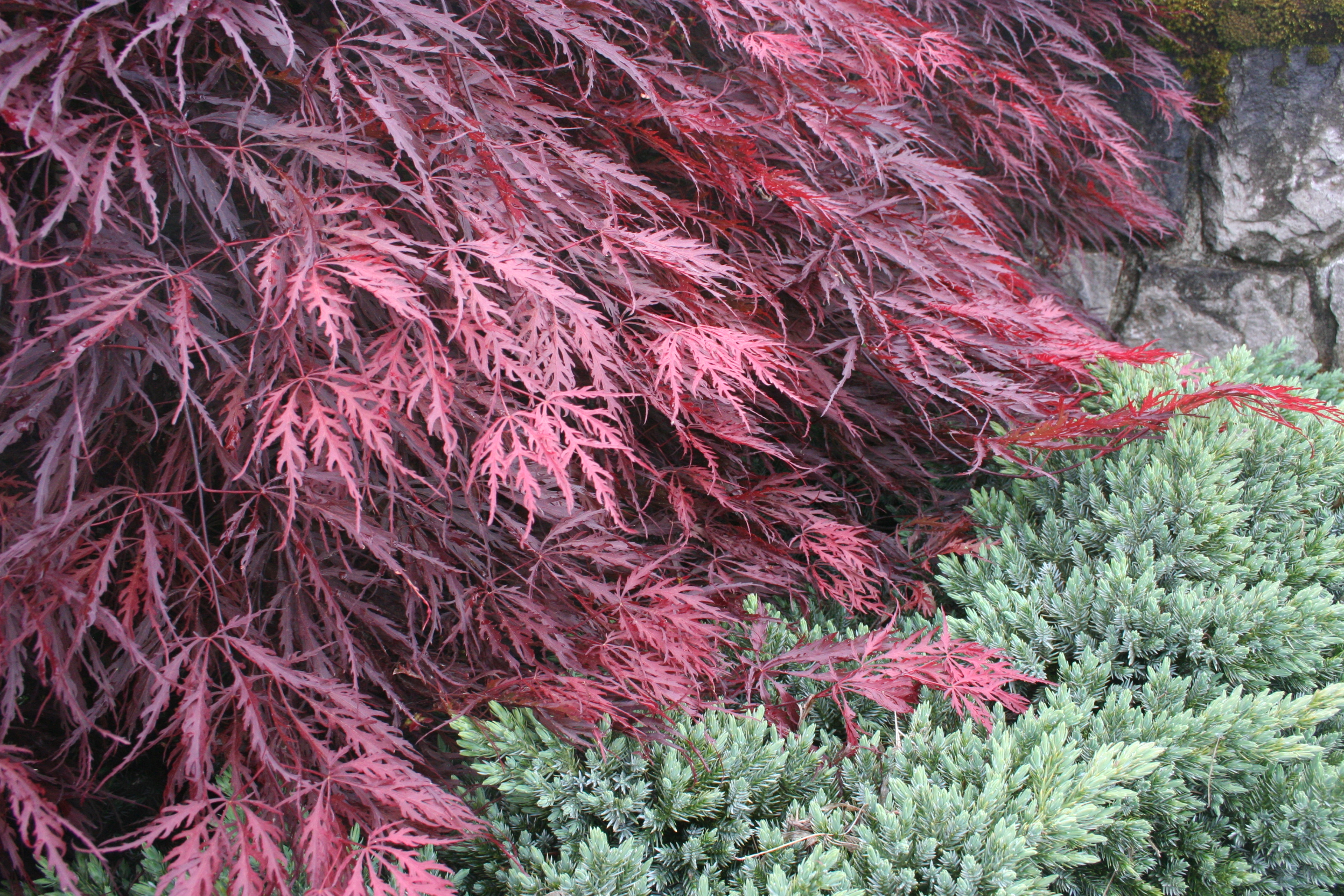Japanese Maples -- The Aristocrat of the Landscape
A couple of weeks ago I suggested you go on a scavenger hunt to find the best ‘Oklahoma’ Redbud in your neighborhood.
This week I’m back with another Shelter in Place scavenger hunt – Japanese Maples!
If you live in an older neighborhood with established shade, I am confident you have noticed the stunning, bright red color of the Japanese Maples while you have been on a walk. And if you live in a new neighborhood with fewer trees, I’m sure you have discovered a few on the north and east sides of houses.
Michael Dirr, author of the Dirr’s Hardy Trees and Shrubs textbook writes this about the Japanese Maples:
“True aristocrats are rare among people and trees, but Japanese Maple is in the first order.
It is difficult to imagine a garden that could not benefit from one of the many forms of Acer palmatum.
The normal habit is round to broad-rounded, with the branches assuming a layered,
almost stratified architecture similar to Flowering Dogwood.
Leaves are light green, to dark green, to reddish purple.
Fall color is sensational with rich yellow and reds through the fall.
The winter silhouette is attractive providing interest during the off season.
Landscape uses for the species and its many cultivars are limited only by
the imagination of the gardener.”
On your Japanese Maple scavenger hunt, you will discover two different shapes and growth habits. The traditional Japanese Maple is a small tree with a familiar maple leaf having five to nine lobes 2-5” long and wide. The other type of Japanese Maple, dissectum, offers finely cut leaves in a dwarf, weeping growth habit.
Varieties of Japanese Maples are numerous. I am not sure how many varieties there are, but Monrovia list 35 on their website. https://plants.monrovia.com/search?p=Q&srid=S1-5DFWP&lbc=monrovia&ts=custom&w=japanese%20maple&uid=466265184&method=and&isort=score&view=grid&srt=0
Here are a few you are sure to find on your scavenger hunt:
‘Bloodgood’ One of the hardiest, and therefore most used, Japanese maples. Attractive foliage with burgundy red coloring turning brilliant scarlet in the fall. Slowly reaches 15-20’ tall and 15’ wide. The airy nature of the tree is well-suited for patio and entry plantings. The tree surprisingly has a good sun tolerance as long as the root system is shaded from the afternoon and evening sun. Our house is blessed with a full grown, stunning ‘Bloodgood’ that was planted by the original owners.
‘Fireglow’ Named for its luminescent purple-scarlet to crimson red fall colors, this selection is similar to the popular 'Bloodgood' but smaller in stature and with deeper red foliage persisting through summer. It is a slow growing, with an upright habit that will reach 6-10' in 10 years.
‘Coral Bark’ Is an upright, vase-shaped form with green leaves, yellow fall color, and coral orange-red winter branches. It thrives in bright dappled shade in warmer regions. It is a moderate grower that will reach 15-20’ tall and wide.
‘Crimson Queen’ A dissectum variety that is a low-branching, dwarf tree with a delicate, weeping form. The foliage holds its beautiful crimson color throughout summer and can turn bright scarlet in autumn. Planted in a bright, dappled shade area will increase the intensity of the foliage color. It is a moderate grower reaching 10’ tall and wide.
‘Garnet’ Also a dissectum, it is a graceful small tree with lacy, deeply cut dark red leaves that retain their color into fall. Very durable and vigorous with a spreading, weeping growth habit. Slowly reaches 10’.
Japanese Maples are not hard to grow and are very low maintenance when they are planted in the right location.
They prefer shade but can tolerate more sun than most realize. The key to the location is for the root system to be shaded and out of the hot afternoon and evening sun. Japanese Maples have very shallow and delicate roots. If the soil is hot in the summer, the leaves will have a tattered, burned appearance in July and August. Even if the leaves are in the sun, as long as the soil is cool, a Japanese Maple will do well in our hot summers. And remember, the more sun they receive the richer the leaf color will be. Our mature ‘Bloodgood’ is in full sun, but the soil is blocked from the west sun, and it has adorned the front of our house for 25 years.
Traditional Japanese Maples have 5-9 lobes and are 2-5” long and wide.
A red leaf and green leaf dissectum varieties planted together in a landscape.
Dissectum have finely cut leaves.
‘Emperor I’ has an upright growth habit and displays more intense color in the summer.
They also need soil that is evenly moist, acid, organic, and well-drained. It is best to plant them slightly high and incorporate a combination of peat moss, pine bark, and/or pecan hulls. During the summer heat, they need a good deep soaking a couple of times per week.
Japanese Maples are a great accent to the typical green leaf plants found in shady areas and they are a perfect companion for azaleas.
So, go on another scavenger hunt this week. See who can find the prettiest and brightest Japanese Maple planted in the best landscape location.
And, text me a picture. I would love to see what you find. (405)520-8199.
Lorne Hall
Hall | Stewart Lawn + Landscape
(405)367-3873











